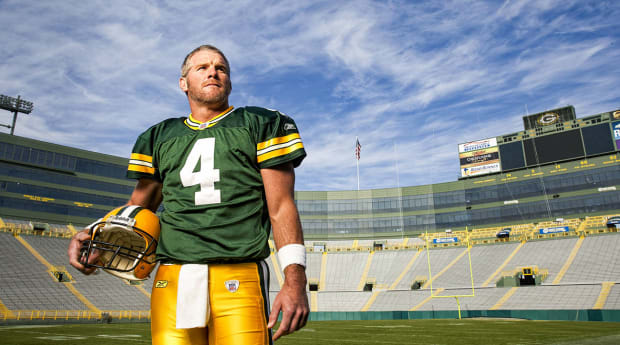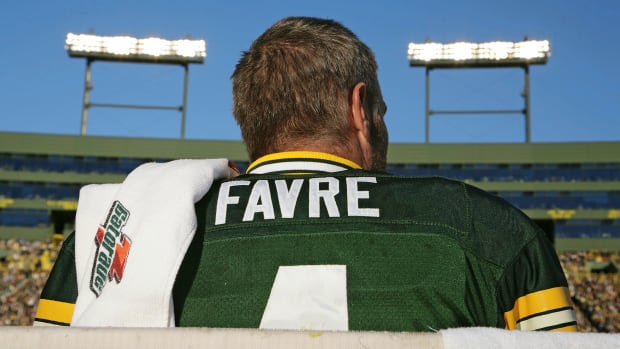What's it like when one superstar is seen as more important than the team? Plus, notes on the backlash to proposed Rooney Rule expansion, competitive balance amid COVID-19 and more.
Even though no American team sports have been played, it still feels like much has happened in the time since my last Business of Football column. As always, I have some perspectives and personal musings to share.

Superstar in a Team Sport
I had a special interest in The Last Dance docuseries, as I started my career working for Michael Jordan’s longtime agent David Falk and had a front row seat to Jordan-related negotiations. I found one thread of the series particularly resonating and familiar: management’s zealous protection of the “team” aspect of team sports.
The Last Dance portrayed Bulls’ general manager Jerry Krause as a pin-cushion for ridicule, unable—or unwilling—to extol Jordan’s greatness to the exclusion of the greater group. Yet Krause’s mentality is not uncommon.
During my time working for the Packers, although Brett Favre was obviously our best player and face of our franchise, I sensed the perception of our team as “Brett Favre and the rest” did not sit well inside our building (there were other similarities between Jordan and Favre’s lives as Brett also hung out with our security guys and—unable to go outside—was trapped in his hotel room on the road). Our public relations staff would chide the media to do stories on players beyond Brett; our scouts wanted more recognition about uncovered gems; our coaches wanted more appreciation for our success rather than relying on Brett’s magic.
And my sense from afar is something similar in Green Bay around Aaron Rodgers. The drafting of Jordan Love in the first round appeared a chess move from scouting and coaching to counter the “Aaron Rodgers and the rest” perception of the team.
It is now the norm in the NFL, not the exception, for superstar/face-of-the-franchise players to end their careers elsewhere, many times without a choice. Management and/or the coaching staff decides move on, even without significant decline from the player. Philip Rivers and Tom Brady joined the list this year; Rodgers will join it in a couple of years.
As illustrated in The Last Dance, management and coaching sometimes want to reclaim that team-over-player, collective-over-individual dynamic, even with the best of the best on their roster.

Rooney Rule Redux
I remember being with the Packers when the Rooney Rule was passed. It seemed like a good idea at the time, but recent numbers have shown it not to be achieving the desired result.
The problem, in my mind, is that the “scorecard” is based on a snapshot—the number of minority coaches and/or general managers—without deeper analysis or understanding of organizational hiring at lower level positions in football operations or administration. The NFL has admirably worked to address that with changes to grow the pool of candidates and remove archaic hiring and timing impediments.
What drew most attention, however, was a proposal to allow teams to improve their draft position by hiring—and retaining—minority candidates. And my first reaction was different than most: I imagined general managers furiously instructing their analytics departments to study the value of hiring minority coaches and general managers. With team operations stalled as they are now, I thought that this would be a welcome assignment for now-bored Ph.D.s and other “quants” that populate NFL front offices. I suspect at least some teams had their analytics staff working on the “Rooney Rule draft incentives” project before it was tabled by the owners. (Translation: It wasn’t going to pass.)
I understood the backlash. No coach or general manager wants to be thinking that there was more to their hire than the quality of their candidacy, even if the team would not admit to that. And something felt, well, slimy about the premise. However, let’s give the credit where credit is due. With the pandemic rightfully dominating all decision making in sports, the NFL made systematic improvements that were well-intentioned, if not threading the needle the right way.
Critics abound, but they are usually long on what’s wrong, and light on what’s right.
Competitive Balance Tested
If there were a two-word mantra that drives the operations of the world’s most successful sports league, it is this: competitive balance. It is baked into the NFL system with fixtures like the draft, the salary cap and franchise tag, all operating in the name of competitive balance.
This year, perhaps more than any other, the NFL’s mantra will be tested by the pandemic. While the NFL operates with one set of competitively balanced rules for its 32 franchises, there is no similar national standard operating procedure during the pandemic.
Even with some jurisdictions staying “closed,” the NFL is allowing teams to open their facilities if located in jurisdictions that allow for it, with restrictions on number of personnel allowed in. To maintain some level of balance, however, the NFL is not allowing coaches or players in facilities and hoping the luxury of time will allow for some equity. Without that, competitive balance will be altered, however slightly.
The NFL has recently been able to power through amid different state laws and policies while maintaining competitive balance on some previous taboos. State laws vary on marijuana use, both recreational and medicinal, yet NFL players, no matter the state, are governed by the CBA rules regarding testing and discipline. Similarly, sports betting is now legal in 17 states and pending in several more, yet NFL players cannot partake no matter the state. NFL law has always trumped state law, but a national health crisis is different. Dr. Anothy Fauci has often said: “We don’t set the timeline; the virus sets the timeline.” And that is a formidable challenge to the NFL’s mission of competitive balance.
Innovation needed
In my most recent column, I discussed pandemic-related financial challenges ahead for both NFL owners and players, a scenario now playing out in Major League Baseball. Indeed, it now appears that if there is no baseball this year, it will not be because of health and safety concerns; it will be about money. Let that sink in.
With crisis, however, comes opportunity. NFL teams now know that they will be losing at least some revenue from ticket sales, merchandise, parking, concessions and other ancillary game day sources. Their challenge is adjusting on both the expense and revenue side.
Of course, teams’ primary expense is player costs. Although the 2020 salary cap is set, teams may “go light” this year with limited CBA accountability for minimum spending. And as we are seeing now in baseball, there are likely negotiations ahead with the union.
On the revenue side, innovation will be the key. German soccer teams are offering fans cutout purchases of themselves in seats, a fun and innovative revenue source. There will be tarping of unused seats, and CGI advertising for sponsors seems inevitable. And what about selling virtual reality to fans to give them up-close viewing from home? There will be some imaginative and innovative ideas to generate revenue that will make us say, “That’s really cool!” Teams do not have to blindly accept an inevitable diminution of revenues by, say, 20%. Smart people and smart teams will separate themselves in this upended world.
Stay tuned.
• Question or comment? Email us.
Post a Comment
Post a Comment